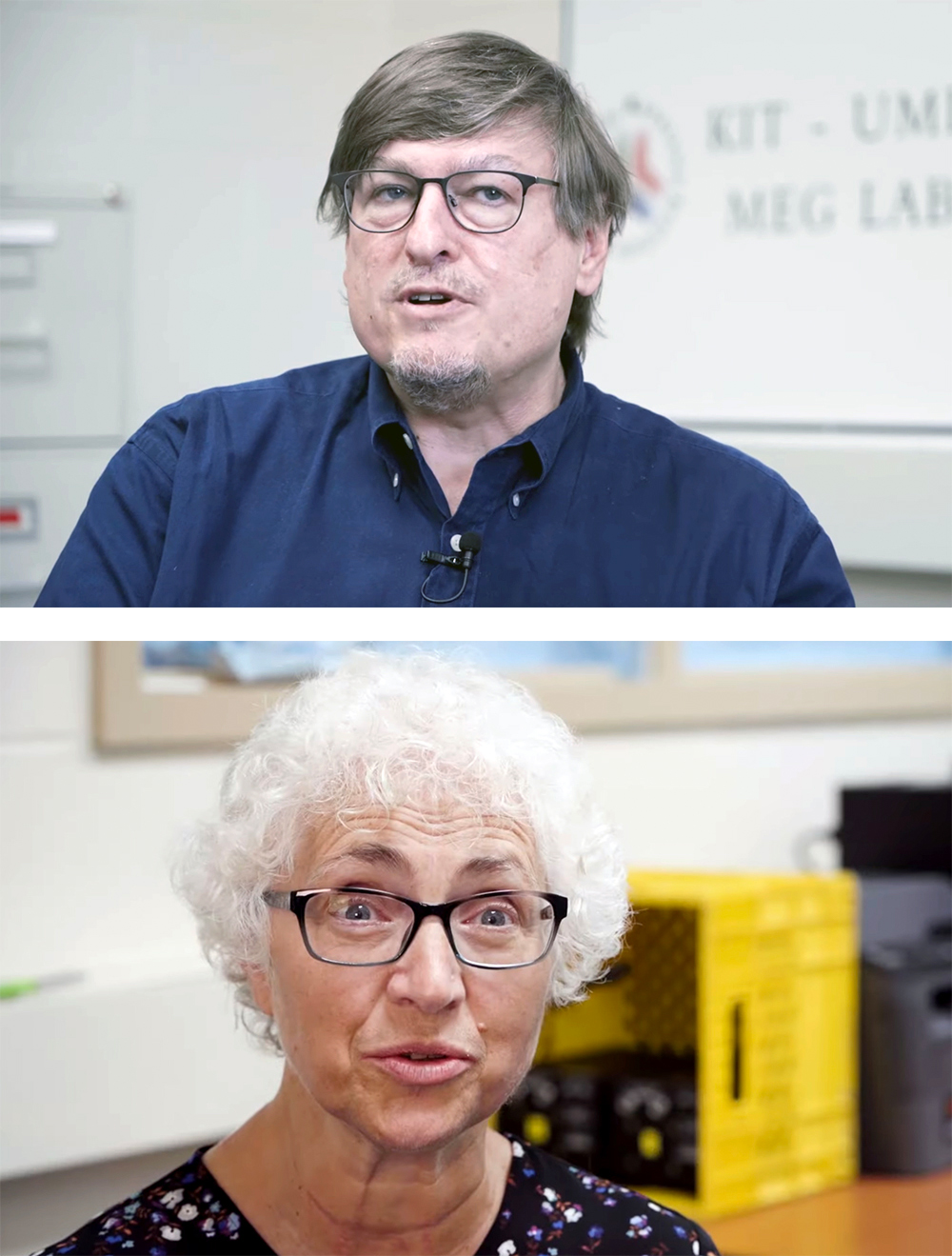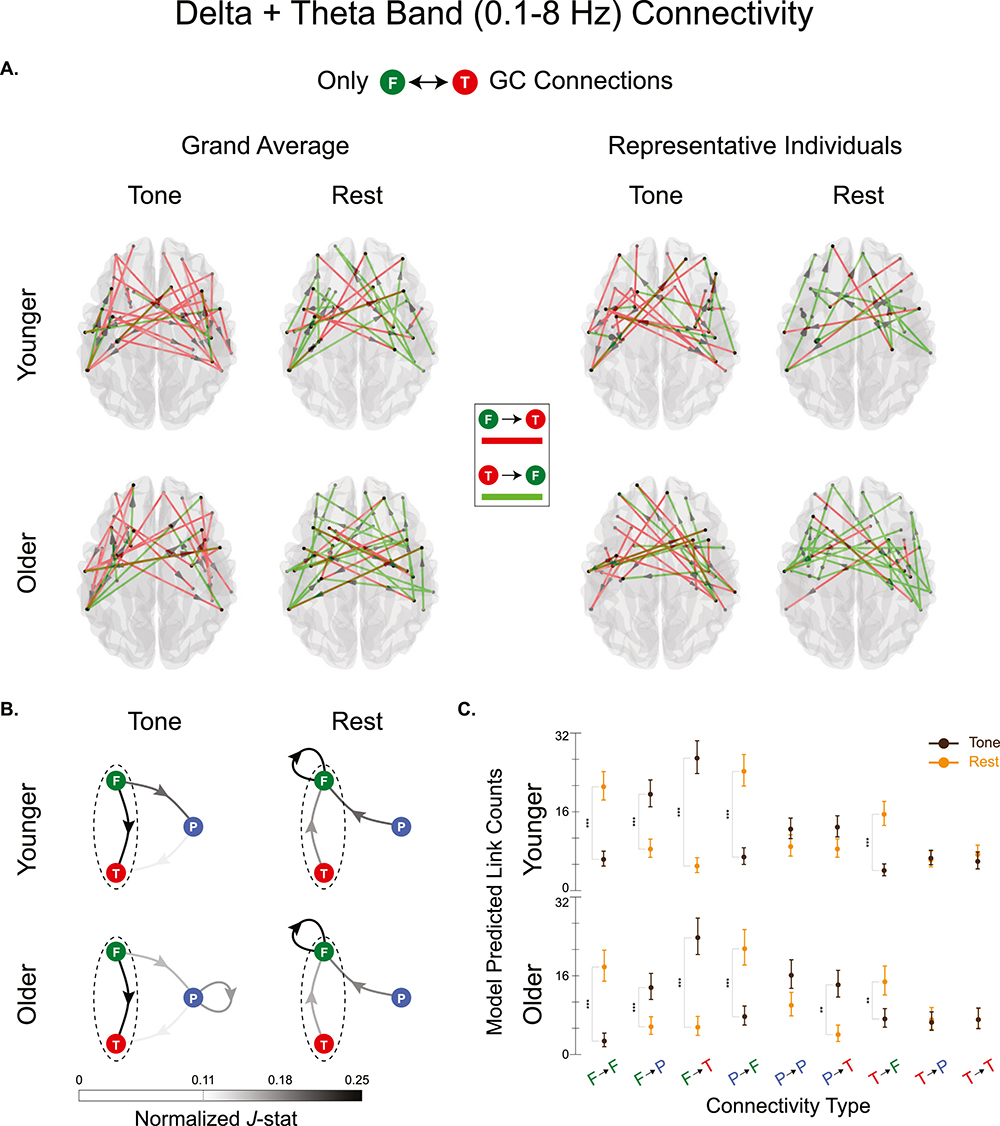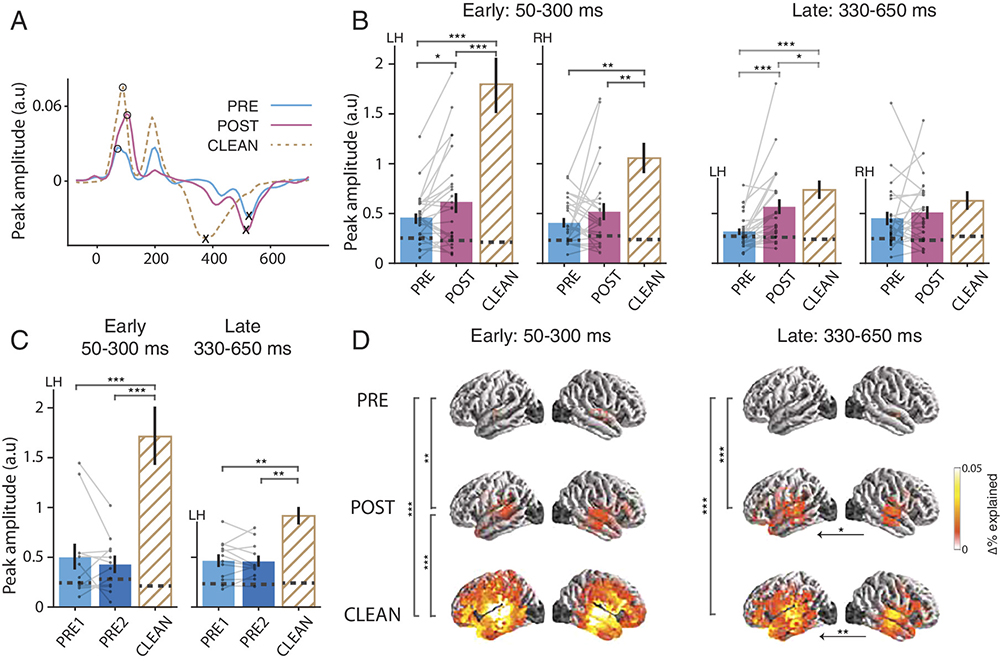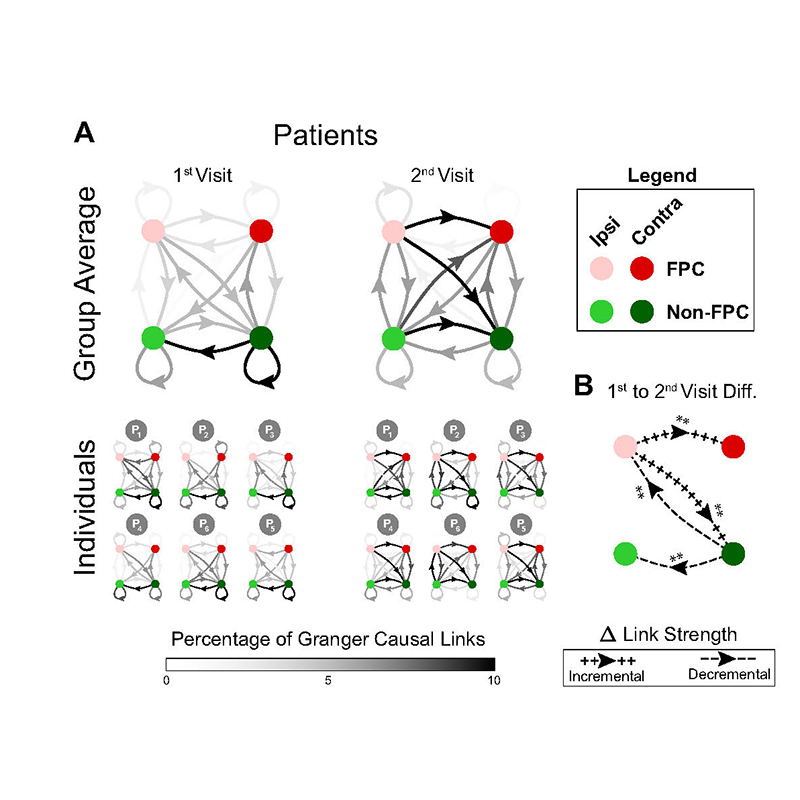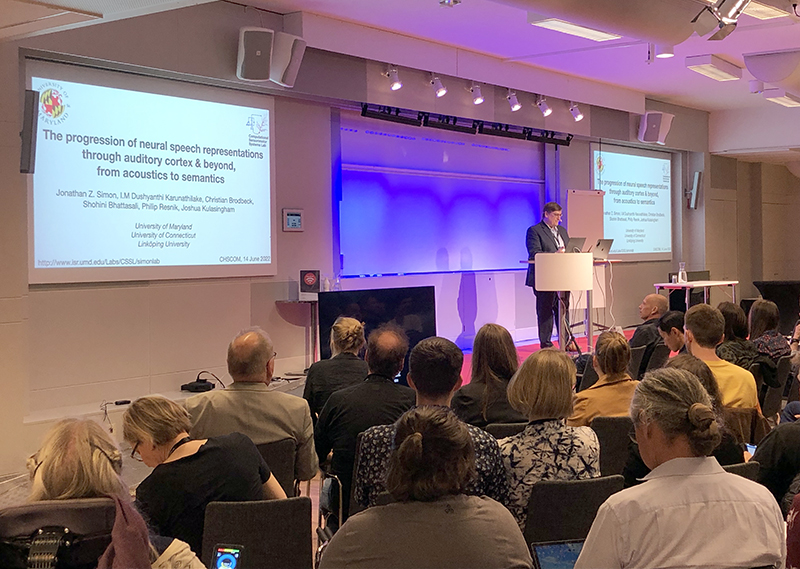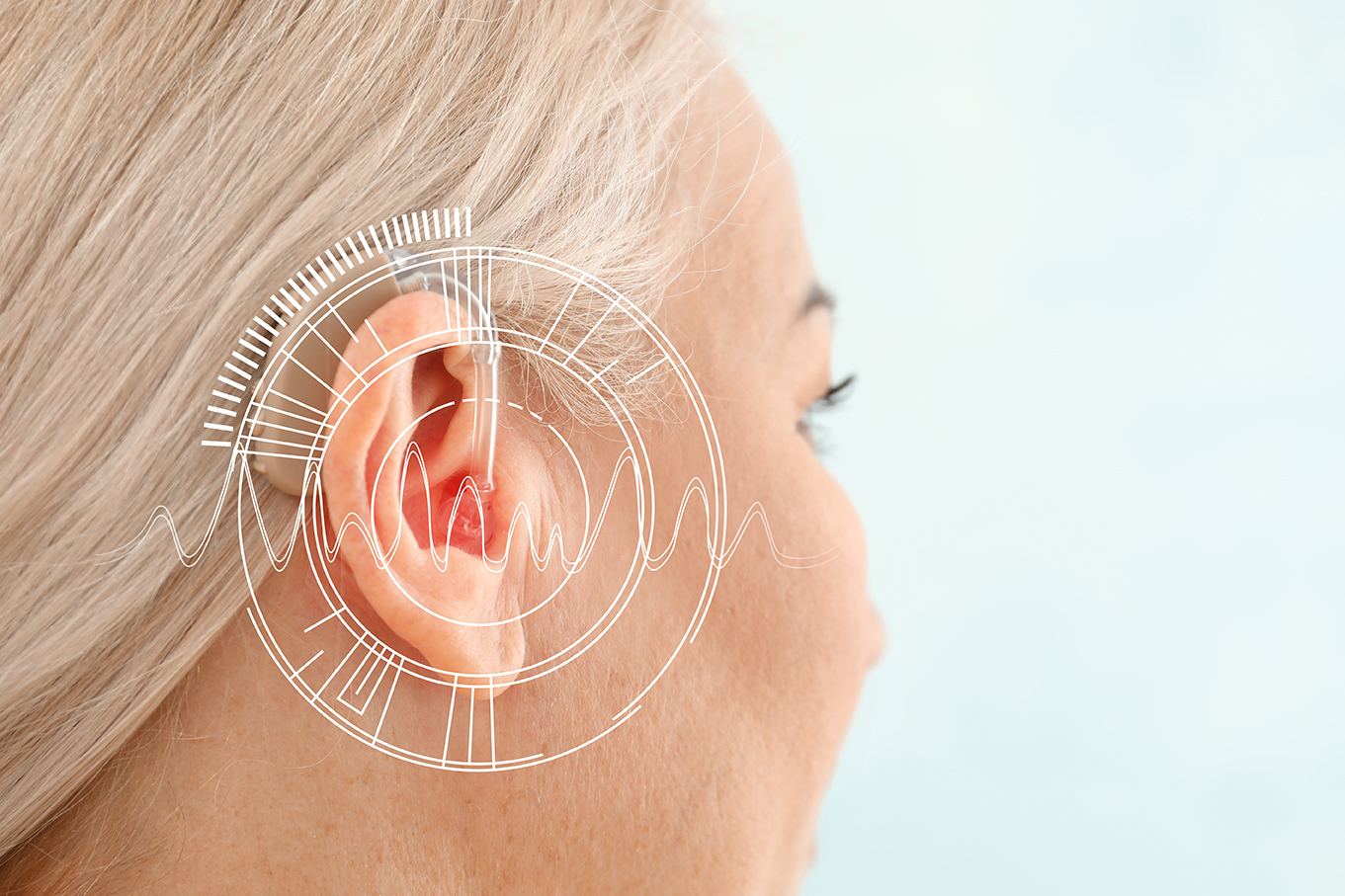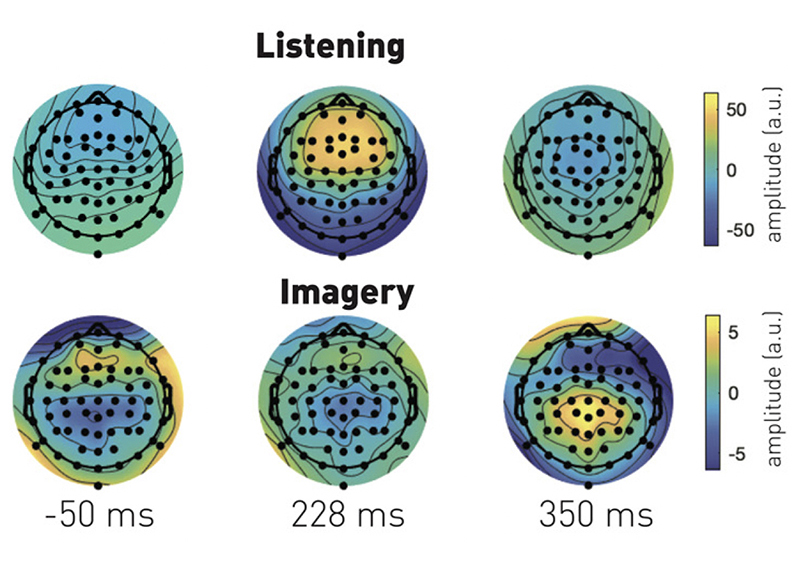News Story
Simon invited speaker at implantable auditory prostheses conference
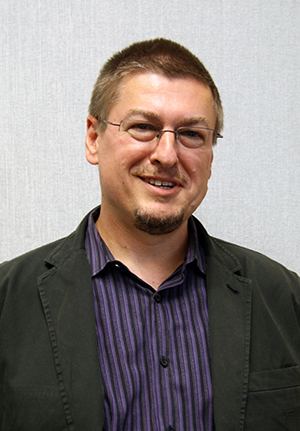
Professor Jonathan Simon (ECE/Biology/ISR) was an invited speaker at the Conference on Implantable Auditory Prostheses (CIAP) in Lake Tahoe, Calif., July 14-19. During the session on enhancing the use of cochlear implants for perception of speech, voice and music, Simon gave a well-received talk on the topic, “Towards Objective Measures of Speech Perception.”
Significant progress has been made using non-invasive neurophysiological tools, especially electroencephalography (EEG) and magnetoencephalography (MEG), to investigate the neural processing underlying different aspects of speech perception. Recent successes may even point the way towards neurophysiologically based “objective” measures of speech perception. In his talk, Simon discussed specific examples of such measures, including the determination of which of several speakers a listener is attending to, the determination of whether or not the acoustic signals of noisy speech are further processed into linguistically-based phonemes, and additional examples of related neural correlates of speech intelligibility.
| View the slides |
In addition to Simon, Stefanie Kuchinsky of the Applied Research Laboratory for Intelligence and Security (ARLIS) and the Walter Reed National Military Medical Center, spoke on “Acoustic, linguistic, and cognitive factors impact effortful listening: Implications for cochlear implant users.” Kuchinsky and Simon currently are co-PIs on an $8M National Institute on Aging grant to combat hearing loss in older Americans. Professor Sandra Gordon-Salant, Hearing and Speech Sciences, is the principal investigator. All three are part of the university's Brain and Behavior Initiative.
About the Conference on Implantable Auditory Prostheses
The conference is a series of biennial international research conferences on cochlear implants and auditory brainstem implants. CIAP provides a unique forum for the presentation and discussion of fundamental scientific research from a diversity of basic science disciplines, as well as input from clinicians, engineers, and technical staff. The close interaction among leading scientific researchers from around the world facilitates the exchange of up-to-the-minute research results.
Published July 24, 2019
